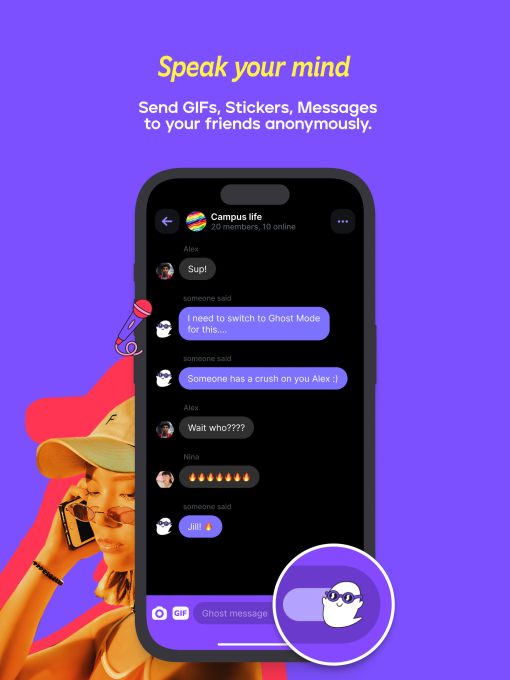Category: TECHNOLOGY
Stripe now valued at $50B following $6.5B raise
Digital payments company Stripe announced Wednesday that it raised over $6.5 billion in Series I funding to value the company at $50 billion.
As we reported earlier this month, the payments giant was expected to raise a lower amount of funding, around $2 billion, though at $60 billion valuation. More recently, Stripe was publicly valued at $95 billion.
New investors in the round include GIC, Goldman Sachs Asset and Wealth Management and Temasek. They joined existing investors Andreessen Horowitz, Baillie Gifford, Founders Fund, General Catalyst, MSD Partners and Thrive Capital.
As earlier reported, Stripe intends to use the proceeds to “provide liquidity to current and former employees and address employee withholding tax obligations related to equity awards, resulting in the retirement of Stripe shares that will offset the issuance of new shares to Series I investors.” The company also noted that it “does not need this capital to run its business.”
It’s been an interesting time for Stripe, valuation-wise. Two months ago, TechCrunch reported that Stripe had cut its internal valuation to $63 billion. That 11% cut came after an internal valuation cut that occurred six months prior, which valued the company at $74 billion. In between, Stripe laid off 14% of its staff, or around 1,120 people, in November.
Stripe now valued at $50B following $6.5B raise by Christine Hall originally published on TechCrunch
https://techcrunch.com/2023/03/15/stripe-now-valued-at-50b-following-6-5b-raise/
Adept, a startup training AI to use existing software and APIs, raises $350M
In another sign that the current VC appetite for AI is insatiable, Adept, a startup building AI that “enables humans and computers to work together creatively to solve problems,” yesterday announced that it raised $350 million in a Series B funding round co-led by General Catalyst and Spark Capital with participation from Addition, Greylock, Atlassian Ventures, Microsoft, Nvidia, Workday Ventures, Caterina Fake, Frontiers Capital, PSP Growth, SV Angel and A.Capital.
Forbes reports that the valuation was “at least” $1 billion.
The cash injection brings Adept’s total raised to $415 million, which co-founder and CEO David Luan says is being put toward productization, model training and headcount growth. “Giant foundation models for language and for images have shown astounding capabilities in the last few years. Adept is building on this momentum via a new kind of foundation model that can perform actions on any software tool using natural language,” he said in a press release.
“Foundation model” is a bit jargony. But Adept’s vision, at a high level, is to create what it refers to as an “AI teammate” trained to use a wide variety of different software tools and APIs. Instead of investigating ways to generate text or images, like startups OpenAI and Stability AI, Adept’s studying how people use computers — specifically how they browse the web and navigate software — to train an AI model that can turn text instructions into sets of digital actions.
Adept isn’t the only one exploring this idea. In a February 2022 paper, scientists at Alphabet-backed DeepMind had an AI observe keyboard and mouse commands from people completing “instruction-following” computer tasks, like booking a flight, to learn how to do them itself. Elsewhere, DeepMind co-founder Mustafa Suleyman has teamed up with LinkedIn co-founder Reid Hoffman to launch Inflection AI, which aims to use AI to help humans work more efficiently with computers.
The competition isn’t scaring investor away, though — no doubt because of the substantial market opportunity. In a recent survey of AI professionals by Intel-owned Cnvrg.io, nearly 50% said that they believe organization investment in AI development will increase despite the macroeconomic climate.
Adept is running lean for now, with just 25 employees. But it’s reportedly experienced some high-level turnover, losing two of its co-founders, Ashish Vaswani and Niki Parmar, to another startup in recent months.
That hasn’t disrupted product development, apparently. Adept’s MVP, called ACT-1, can perform tasks like importing LinkedIn URLs into recruiting software, according to Forbes. ACT-1 displays as an overlay window on top of existing software like Google Chrome or Salesforce. A prototype is ready for desktop, but will also come to mobile in the near future.
The versatility of ACT-1 evidently attracted strategic investors like Microsoft, Nvidia, Atlassian and Workday, all of which market software that might someday benefit from its AI assistant.
General Catalyst’s Deep Nishar had this to say: “Adept … possesses a depth of expertise to deliver a commercial product that pushes the generative AI frontier beyond text and image modalities into the practical realm of knowledge worker actions. Excitingly, ACT-1 has the potential to lower the barrier to entry within the enterprise workforce and thus may yield greater inclusive prosperity.”
Adept, a startup training AI to use existing software and APIs, raises $350M by Kyle Wiggers originally published on TechCrunch
Substack brings its ‘Chat’ discussions feature to the web
Substack announced today it’s bringing its “Chat” feature to the web after launching it on mobile last November. Chat allows writers to communicate directly with their loyal readers right on Substack. When Substack first announced chat, the company was hoping to capitalize on Twitter’s upheaval in the wake of Elon Musk’s takeover.
The company also announced that it’s expanding the controls regarding who can start new conversations in a Substack. Publishers can now choose to give all subscribers, only paid subscribers or only founding members the power to start a chat.
“These new features make it possible for more people to participate in chats, from any device, while giving subscribers a more active role in the community conversations,” the company said in a blog post. “It’s also a boon for those of us who prefer to type on a keyboard instead of a touchscreen. Chat turns a Substack from a broadcast medium into a place to hang out with the people who share your intellectual interests.”
Substack notes that writers who have hosted two or more chats on Substack are earning 19% more annual revenue than those who have not.
With Chat, Substack is not only taking on Twitter, where many back-and-forth threaded discussions between writers and readers already take place, but also other online communities where writers have been building out networks of their own, like Discord, Slack and Telegram.
Today’s announcement comes a few weeks after Substack introduced Private Substacks, which are publications that you can host alone or readers can request to subscribe to read your posts. The launch indicated that the company was somewhat inching further into Twitter’s territory by offering Private Substacks, considering that Twitter has offered the ability to make your account private for many years now, and also offers Twitter Circle, which allows you to tweet to a smaller audience of your choice.
Substack brings its ‘Chat’ discussions feature to the web by Aisha Malik originally published on TechCrunch
https://techcrunch.com/2023/03/15/substack-brings-its-chat-discussions-feature-to-the-web/
UK Spring Budget: Government trumpets improved tax relief scheme for ‘R&D-intensive SMEs’
U.K. Chancellor Jeremy Hunt went a small way toward addressing concerns over proposed research and development (R&D) tax credit cuts for small-and-medium sized enterprises (SMEs). But he stopped short of the u-turn some had hoped for following the Government’s Autumn Statement last November.
Today’s announcement came as part of the U.K.’s Spring Budget, where Hunt revealed a number of investments into the technology sector, including plans for a £1 million annual AI prize, quantum investments, and a new £900 million ‘exascale’ computer.
‘R&D-intensive’
The R&D Tax Credit scheme was first introduced by the U.K. Government back in 2000, designed to entice businesses to invest in innovation. Through the scheme, SMEs can qualify for tax relief for R&D expenditure, which might cover clinical trial costs, materials, and staffing, while loss-making businesses can apply for cash tax credits.
Under the scheme, companies are classed as SMEs if they have fewer than 500 employees, and a turnover of less than €100 million or a balance sheet that falls below €86 million. If they meet that criteria, loss-makers can currently apply for an R&D claim of 33%, or 33p for every £1 they spend on R&D. With the changes announced last November, however, that figure was set to drop to 18.6%, or 18.6p for every £1 spent on in-house R&D — effectively a 40% decrease.
The announcement had sparked significant criticism from across the business and technology spectrum, with the Coalition for a Digital Economy (COADEC) concluding that the average startup could stand to lose around £100,000 per year. And in truth, the move had surprised many, particularly given Hunt’s much-trumpeted mantra about making the U.K. the next Silicon Valley.
In his budget today, Hunt didn’t do an about turn as such, given that the previously announced reduction will remain in place — however, loss-making “R&D-intensive” startups out there will receive a top-up. Those that spend 40% or more of their total outgoings on R&D (which is a lot) will be able to claim a tax credit of 27%, or £27 for every £100 spent.
“That means an eligible cancer drug company spending £2 million on research and development will receive over £500,000 to help them develop breakthrough treatments,” Hunt said, adding that the overall package amounts to around £1.8 billion.
Redress
But however we look at this, all SMEs that previously claimed credits for their R&D investments will still be down starting from April 1 compared to before. In total, the Government said that some 20,000 startups will benefit from R&D scheme overall, but only around 11,000 will qualify for this new top-up portion: 1,000 from the pharmaceutical and life sciences industry; 4,000 from computer programming, consultancy, and “related activities,” such as AI; and around 6,000 firms from other segments such as manufacturing.
Mark Smith, partner at Ayming, a consultancy that helps businesses secure Government R&D funding, says that today’s announcement is a tacit acknowledgement from the Government that its decision last year to cut tax relief for all SMEs “undermines its ambition to make Britain the next Silicon Valley,” though this latest redress is somewhat limited.
“The Government’s new funding for R&D-intensive businesses will allow the U.K.’s most innovative companies to do what they do best,” Smith said in a statement issued to TechCrunch. “The structure the Chancellor ran through sounds sensible and clear, with 40 percent of spend being a straightforward figure and goal for others to work to. However, it is a lot more targeted and therefore not as accessible. Forty percent of spend on R&D is very high, so only a very small portion of U.K. businesses will be eligible.”
On top of that, it’s not entirely clear how the new legislation will be applied, and to what specific disciplines, even if it has identified broader industries.
“While its definition of ‘research-intensive SMEs’ is clear, we don’t know which companies and what activity will be eligible,” Smith continued. “It would be great to see green innovation incorporated into this. It was a little disappointing not to hear more mention of funding relating to R&D in environmental technologies, which the U.K. could be a world leader at. To drive forward the sustainable transition, specific tax incentives must be considered around green R&D. If they can include that in definitions, it could provide a boost both to our innovation and net-zero objectives.”
UK Spring Budget: Government trumpets improved tax relief scheme for ‘R&D-intensive SMEs’ by Paul Sawers originally published on TechCrunch
ADIA invests $500 million in Lenskart
Lenskart has signed a definitive agreement to raise $500 million from the Abu Dhabi Investment Authority, they said Wednesday, at the height of the market slump as the Indian eyewear retailer bulks up its offerings and scales to international markets.
The investment, an extension to last year’s round, helps the startup retain its $4.5 billion valuation. ADIA’s investment includes some secondary purchase of shares from some early backers of Lenskart, the startup said. According to data intelligence platform Tracxn, Lenskart has raised $1.5 billion to date in primary and secondary raises.
The 12-year-old Indian eyewear startup, which counts SoftBank and Alpha Wave Global among its backers, sells eyeglasses, sunglasses, contact lenses and other eyewear accessories. It has become one of the largest eyewear players in India by undercutting the competition, offering premium glasses at affordable prices.
Lenskart has been able to keep the prices low because it’s bringing more efficiency into the eyewear sector, Peyush Bansal, co-founder and chief executive of Lenskart, told TechCrunch in an interview. The firm has built the expertise to manufacture its own eyeglasses and contact lenses and for many technologies, it’s the exclusive licensing partner for global firms in India, he said.
The startup, which currently has operations in India, Southeast Asia and the Middle East, sells its eye products online and through over 2,000 stores, three-fourths of which are in India. The startup is opening more than seven stores a week and plans to manufacture 20 million pairs of glasses next year, he said.
Hundreds of millions of Indians need vision correction, but only a fraction of this population is currently wearing glasses or contact lenses. Bansal said the company will continue to scale its operations in India and existing international markets where it has operations because they remain highly underserved.
But what has helped Lenskart, and the eyewear industry at large, is just how quickly Indians are adopting glasses, he said. People are buying as many as four pairs of glasses every two years, a figure that is closely growing to five, he said, pointing to a similar popularity in sneaker purchases.
The startup is also slowly expanding its premium offerings, thanks to the acquisition of Japanese eyewear brand OwnDays and its new in-house brands such as John Jacobs.
Lenskart, which posted a revenue of over $180 million in the financial year ending March 2022, is currently on a monthly run rate of about $5 million, according to a person familiar with the matter. Bansal declined to comment on revenue figures, but said the startup is profitable.
“The next phase at Lenskart is a journey of 10 to 100 where we are focusing on building a diverse culture that enables innovation and execution at scale while solving a large bottleneck hindering high quality vision for all. I hope we can continue to work hard with the same level of humility and dedication and transform the lives of a billion people eventually,” said Bansal.
The funding for Lenskart comes at a time when deal flow activity has slowed significantly in the Indian startup market, especially for late-stage startups. The number of $100 million or higher rounds fell 50% in India last year to just 48 — and the vast majority of them were closed in the first half of 2022, Bain and Company said in a report Wednesday.
Share of investments by leading investors also shrank to less than 20% (versus 25%+ in 2021) as global hedge funds and crossover funds exercised caution in H2 2022, the consulting firm said.
Lenskart is also cautious with its spending, Bansal said, asserting however that for startups with long-term visions, the mood of the funding cycles don’t matter as much. The firm is open to exploring more acquisition opportunities, he said.
“Lenskart has rapidly established itself as one of the largest and most innovative eyewear companies globally. Given its unique technology-enabled and vertically integrated business model, we believe the company remains well positioned to build on its leadership position. This investment is a continuation of our strategy of investing in highly differentiated, market leading businesses in Asia linked to the region’s consumption-driven growth and rapid technological advancement,” said Hamad Shahwan Al Dhaheri, executive director of Private Equities Department at ADIA, in a statement.
ADIA invests $500 million in Lenskart by Manish Singh originally published on TechCrunch
https://techcrunch.com/2023/03/15/adia-invests-500-million-in-lenskart/
Get utterly roasted by Carrot Weather’s new chatbot with ChatGPT update
“Greetings, meatbag.” Carrot Weather, the snarky weather app that delivers daily forecasts, has launched a ChatGPT-based chatbot that delivers even more sass. The feature is rolling out globally today on iOS devices.
There’s a lot you can do with the Carrot AI beyond just chatting about the weather and getting insulted. Users can also play text-based games, collaborate on story ideas and more. The feature has a limit of five messages that users get for free. After that, you have to buy more via Carrot’s Tip Jar.
Carrot developer Brian Mueller explained to TechCrunch that you can even change the bot’s personality, such as making it sound more helpful, sarcastic, crazy, drunken or annoyed. Other personality modes include suave, funny, disgusted, bored, mobster, cowboy, pirate and more.
There’s even a mode that Carrot calls “Fake News,” which proved to be very hilarious when we tested it. See the response we got when we asked “Are birds real?”
Image Credits: TechCrunch
The new ChatGPT-based chatbot is a part of Carrot Weather’s new version 5.10, which includes updates for Premium ($19.99/year) and Premium Ultra ($39.99/year) members like additional high-quality radar maps in Australia, Japan, South Korea, Taiwan and nearly every European country, as well as expanding government-issued weather alerts to more countries and territories like Canada, Israel and Europe.
Additionally, Carrot Weather introduced more push notifications. For instance, Premium Ultra members in Europe, Central America, and the Caribbean now get lightning notifications, so they’re alerted about nearby lightning strikes.
There are also new NEXRAD (Next Generation Weather Radar) level 3 radar station products like Storm Total Accumulation to track severe weather in the United States. The features are only available for Premium Ultra subscribers. NEXRAD is a network of 160 high-resolution radars operated by the National Oceanic and Atmospheric Administration and National Weather Service.
Get utterly roasted by Carrot Weather’s new chatbot with ChatGPT update by Lauren Forristal originally published on TechCrunch
https://techcrunch.com/2023/03/15/carrot-weather-app-new-chatbot-with-chatgpt-update/
Ghost debuts an anonymous group messaging app with ChatGPT baked in
Anonymous social apps have a history of devolving into bullying and harassment, ultimately leading to their failure. But a new startup called Ghost believes that putting in extra guardrails around the anonymous experience will allow users to have fun, without the usual downsides. To test this theory, the company has now launched its Ghost messaging app that allows users to share an anonymous message in a group chat with friends in order to flirt, joke, or ask questions without revealing their identity. The app also includes a range of other features, including the ability to ask ChatGPT a question directly within the group chat, among other things.
The idea, explains Ghost’s founder Cem Kozinoglu, was to make something that was fun to use but that still respected a user’s desire for privacy. To accomplish this, the app uses something it’s calling “Ghost Protocol,” which is a system that utilizes zero-knowledge proofs on the end user’s device.
This way, the app knows who has access to a given group chat, but Ghost — the company itself — does not.
Thanks to his entrepreneurship background, Kozinoglu understands the motivations of social app users. Prior to Ghost, the founder worked as the Director of Mobile at GIPHY after the company acquired his TechStars-backed startup /Slash Keyboard. He’s seen the latest trends among teen apps, but believes there’s potential to do anonymous social in a way that’s safer without enabling bad behavior.
“We started playing around with this concept, and it also fit very well with the name ‘ghost’ because of anonymity,” Kozinoglu explains. “But we also know there’s a dark side of anonymity. [There are] these apps coming out — Gas [which was acquired by Discord], Slay — and they’re purely focusing on cutting the chat and giving positive feedback to your peers…what we’re doing is kind of like ‘Gas meets Discord.’ We want to add different flavors of anonymous messages,” Kozinoglu says.
For example, one type of anonymous message Ghost enables is anonymous crushes. A user could say to the group they have a crush on someone without the sender revealing their name. Then, if the other person also has a crush on them, too, they would be able to have a private chat, similar to Tinder.
In a group chat for a classroom at school, anonymity could allow students to ask questions among peers who may or may not be close friends.
There are also hidden messages which let users see who cares most about them, as the sender gets alerted as to who revealed the message.
“Guess Who” messages, meanwhile, initially hide the sender, allowing users to guess who sent the message.

Image Credits: Ghost
Not all these types of anonymous messages are live as of yet, but Kozinoglu says the Anon Crushes feature should be ready to ship by next week.
To add protections around anonymity, Ghost uses a moderation system that automatically deletes any Ghost message (anonymous message) if at least two people report it. If the same bad actor then sends two ghost messages that get reported, the app will block their anonymous identity in that particular group chat. That is, the app doesn’t block the user themselves from the group chat, only their ability to post anonymously to the group. (In fact, the app itself doesn’t even know which user to block because of its use of the Ghost protocol. It only knows which anonymous identity to restrict.)
Finally, if the bad actor gets reported across three different groups, resulting in bans of their anonymous identity, they’re no longer able to use “ghost mode” in any group chat.
The Ghost branding appears alongside other features, as well, like the ability to be online but invisible, which is called Ghost Status.

Image Credits: Ghost
Its group chats are limited to 50 users so they don’t get overly large, as on Telegram. The idea is that users should actually know one another in some way. This is also enforced by requiring users to allow the app to access their contacts — and there’s no way to skip this permission request, we found.
Another fun and timely feature is the ability to use ChatGPT (the ChatGPT-3.5-turbo model) from within the group chat, which allows users to ask the chatbot questions and interact with the bot as a group.
“It is one of the first [use cases of] multi-player ChatGPT inside a group chat, Kozinoglu said in a follow-up email. “It is fully context-aware. It has been one of the most used features,” he added.

Image Credits: Ghost
Kozinoglu says the goal is to not replace other messaging apps, necessarily, but to become known for the format it’s introducing.
“In Snapchat’s case, they owned disappearing messages,” he notes. “In our case, we want to own anonymous messages — any flavors of anonymous messages — and be an alternative place where it’s fun. It’s fun to be anonymous. It’s fun to be able to talk to others and allow you to do pure freedom of speech,” Kozinoglu says. The latter is particularly important to the Turkish founder, who knows first-hand the difficulties around being able to express yourself under a government rule that cracks down on free speech.
The company behind Ghost, Catch Social, was actually founded three years ago but had originally been developing a different product focused on adding chat to a crypto wallet-to-wallet application. A prior co-founder, also from GIPHY, had worked on that project but left the startup around six months ago. There are now 9 employees, including 2 contractors.
To date, Ghost has raised $8 million across two seed funding rounds from investors including Slow VC, Coinfund, General Catalyst, Betaworks, DreamMachine, Afore VC, 186 VC, D4, and various angels like GIPHY founder Alex Chung, Wayne Chang, Jeff Siebert, and others.
Some of that money is being spent now on customer acquisition — Ghost is doing a lot of TikTok marketing. But Kozinoglu says they’ve gotten Ghost’s customer acquisition costs down to 15 cents per install and are now focusing more on working influencers, not just running ads.
With the increased demand for ChatGPT following the launch of GPT-4 and news from Microsoft around Bing, Ghost is focusing more heavily on its own ChatGPT features, which it’s calling “Ghost Question.” The startup is waiting on ChatGPT 4 access, Kozinoglu notes.
The app had a waitlist of over 50,000 sign-ups pre-launch. Ghost has since attracted 30,000 installs following last week’s public launch and is now hovering around No. 50 in the U.S. App Store’s Social Networking category.
Ghost debuts an anonymous group messaging app with ChatGPT baked in by Sarah Perez originally published on TechCrunch
Dish customers kept in the dark as ransomware fallout continues
Dish customers are still looking for answers two weeks after the U.S. satellite television giant was hit by a ransomware attack.
In a public filing published on February 28, Dish confirmed that ransomware was to blame for an ongoing outage and warned that hackers exfiltrated data, which “may” include customers’ personal information, from its systems.
Dish hasn’t provided a substantive update since, despite customers continuing to experience issues — or know if their personal data is at risk.
TechCrunch has heard from customers that still have no access to Dish, or services through its subsidiaries like Boost Mobile. Others say they have been unable to contact Dish customer services since the incident began two weeks ago. We have heard from others who say they have been affected by email and voice phishing attacks exploiting the uncertainty around the Dish incident, and TechCrunch has also heard of customers saying their Dish services were disconnected due to ongoing issues at the company meaning the customers were unable to pay their bill.
In a statement given to TechCrunch on Wednesday, Dish spokesperson Edward Wietecha said that “customers are having trouble reaching our service desks, accessing their accounts, and making payments.” When asked whether Dish was disconnecting customers, Wietecha added that “customers who had their service temporarily suspended for nonpayment received additional time until our payment systems were restored.”
Dish declined to share more details on what customer data was accessed during the incident, with Wietecha telling TechCrunch that “these types of investigations take time.” Instead, Wietecha shared almost an exact copy of the company’s statement that has barely changed since it was first published.
TechCrunch also heard that the impact of the breach could extend far beyond Dish’s 10 million-or-so customers. A former Dish retailer told TechCrunch that Dish retains a wealth of customer information on its servers, including customer names, dates of birth, email addresses, telephone numbers, Social Security numbers, and credit card information. The person said that this information is retained indefinitely, even for prospective customers that didn’t pass Dish’s initial credit check.
Dish declined to comment, but did not dispute the claims. Dish also would not say if the company has the technical ability to detect what internal and customer data, if any, was infiltrated. The company also declined to say whether the company had received, or been made aware of, a ransom demand.
It’s unclear when Dish will recover its affected systems, but given the ongoing impact points to a long road to recovery. Internet records show that Dish hosted its own infrastructure until recently before shifting to Amazon’s cloud service around February 23 — around the time of the ransomware attack — suggesting Dish’s in-house systems may have been severely impacted by the attack.
Brett Callow, a ransomware expert and threat analyst at Emsisoft, tells TechCrunch that this, coupled with the fact the disruption has lasted so long, “implies the attack was significant and that Dish does not have an easy and straightforward path to recovery.”
Dish’s Wietecha told TechCrunch that Dish is “working to restore all of our customer experiences is a top priority, but it will take a little time before things are fully restored.”
It’s also not yet known who is behind the Dish ransomware attack but Bleeping Computer previously reported, citing sources, that Black Basta — which many believe to be a rebranding of the notorious Conti ransomware gang — may be responsible. Dish has yet to appear on Black Basta’s leak site, suggesting that negotiations may be ongoing.
Do you work at Dish? Do you have more information about the Dish cyberattack? You can contact Carly Page securely on Signal at +441536 853968, or by email. You can also contact TechCrunch via SecureDrop.
Dish customers kept in the dark as ransomware fallout continues by Carly Page originally published on TechCrunch
https://techcrunch.com/2023/03/15/dish-customers-kept-in-the-dark-as-ransomware-fallout-continues/
Sling TV launches new features for sports fans, including picture-in-picture mode and an iOS widget
Sling TV announced the launch of three features yesterday that many March Madness fans will likely enjoy, including a new “Side View” feature that allows web users to watch games in a small screen overlay on top of whatever it is their doing, whether it be live tweeting the action or, perhaps, working on a project for their job.
The live TV streaming service also launched a new custom widget for iOS devices and updated its live “Sports Scores” feature by adding a dedicated home screen row.
To enable the new Side View feature on a desktop browser, Sling users can click on the button in the top right corner that says, “Browse your computer while watching video.” This will create a picture-in-picture window that allows users to open other windows, tabs and apps while simultaneously watching a livestream. The small screen overlay can be moved anywhere on the page.
Image Credits: Sling TV
Sling TV’s “Sports Scores” feature lets users browse all sports scores while watching TV. It launched over the summer of 2022, allowing users to access scores from NFL and college football games to NBA, NHL and MLB. Now, viewers can watch March Madness games across select devices. The feature is rolling out to Roku, Amazon and Android TV this week.
As part of the update, the company also added a dedicated home screen row for the live game scores, letting fans view scores as well as watch live games and access the matchup schedule all in one place. Plus, if a Sling TV subscriber is recording a game to be watched later, the scores of that game will be hidden, the company noted in its announcement.
Also, Sling TV launched a Sling widget for iOS users so they can now access their favorite channels, game scores, and DVR recordings without leaving the home screen. There are various different style options for the widget, including the “2 Row” or “4 Row” options for users to view a guide that displays channels.
It’s important to note that fans that want to watch the men’s tournament can only access TBS, TNT, and truTV with the Sling Blue plan. This means viewers need to subscribe to another live TV streaming service if they want to watch the Final Four and championship games since those will be on CBS. Sling TV doesn’t offer CBS.
Also, the women’s tournament is on ESPN, which is only available with the Sling Orange plan.
Sling Blue is $45 per month, and Orange is $40 per month. Subscribers can also get the bundle for $60 per month.
Sling TV launches new features for sports fans, including picture-in-picture mode and an iOS widget by Lauren Forristal originally published on TechCrunch
Verity raises $32M as IKEA stores deploy its inventory drones
There’s no shortage of startups attempting to put drones to work. There is, however, a longstanding question around the efficacy of such plans. Drones — especially the smaller variety — are impressive pieces of technology, but their functionality is relatively limited. A small quadcopter probably isn’t going to prune your trees or walk your dog anytime soon.
One thing they can do exceptionally well, however, is imaging. Industries have been cropping up around this functionality in recent years, deploying drones for land management, forestry and industrial inspection, among others. There are also a number of firms, including names like Gather AI, IFM and Corvus, putting these devices to work as a method of tracking warehouse inventory.
It’s a business Verity has been in for a long time. The Zurich-based firm was founded way back in 2014, with the promise of an automated solution that can work around the clock tracking products — one of the most time- and resource-intensive tasks in a warehouse. This morning, the company announced a $32 million Series B. Led by A.P. Moller Holding and featuring Exor Ventures (among others), the round follows an $18 Series A raised back in 2018.
“The completion of our Series B funding round is an important nod to the value our system provides to clients, and it demonstrates investor confidence in our industry-leading solution and team,” said founder and CEO Raffaello D’Andrea. “We are especially pleased to welcome A.P. Moller Holding as a key investor in Verity, a global influencer committed to supporting companies that are delivering supply chain excellence and a positive impact on the environment.”
Prior to founding Verity, D’Andrea was notably a co-founder of Kiva Systems. That company was acquired back in 2012 and has since become the foundation of Amazon Robotics, with its mobile shelf-moving systems serving as the foundation of the retail giant’s automated arsenal.
Verity appears to have been cruising along just fine for the past five years. The company lists Samsung’s SDS unit and logistics firm DSV as clients. IKEA’s Swiss wing has also been implementing the technology since 2021. The furniture brand says it has 100 of Verity’s drones operating across 16 locations located in Belgium, Croatia, Slovakia, Germany, Italy, the Netherlands and Switzerland.
“We are investing in technology across the board so that our stores can better support customer fulfillment and become true centers for omnichannel retailing,” says Tolga Öncu of Dutch IKEA holding company INGKA. “Introducing drones and other advanced tools — such as, for example, robots for picking up goods — is a genuine win-win for everybody. It improves our co-workers’ well-being, lowers operational costs and allows us to become more affordable and convenient for our customers.”
Verity raises $32M as IKEA stores deploy its inventory drones by Brian Heater originally published on TechCrunch
https://techcrunch.com/2023/03/15/verity-raises-32m-as-ikea-stores-deploy-its-inventory-drones/


